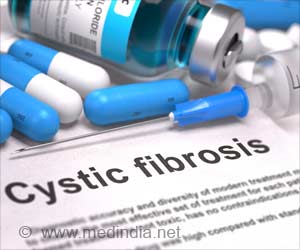Tuberculosis is caused by Mycobacterium tuberculosis. Extensively drug-resistant tuberculosis (XDR TB) can be spread due to person-to-person transmission.

TOP INSIGHT
New evidence shows person-to person transmission to be a driving force for drug-resistant tuberculosis.
South Africa is experiencing a widespread epidemic of XDR TB, the deadliest form of TB, including a tenfold increase in cases between 2002 and 2015. The study found that the majority of cases (69 percent) in high HIV- and high TB-burden areas happened due to person-to-person transmission rather than inadequate TB treatment in South Africa. By using social networks analysis, the study identified numerous opportunities for transmission not only in hospitals, but also in community settings, such as households and workplaces. The study has important implications for efforts to prevent drug-resistant TB, which have traditionally focused on ensuring that patients receive accurate and complete TB treatment.
"These findings provide insight as to why this epidemic continues despite interventions to improve TB treatment over the past decade. Public health and research efforts must focus more intensely on identifying and implementing additional or new interventions that halt transmission in hospitals and community settings," says Neel R. Gandhi, MD, associate professor of epidemiology at Emory's Rollins School of Public Health.
The study included 404 XDR TB patients in KwaZulu-Natal, South Africa and was led by a team of researchers including Gandhi and Sarita Shah, MD, MPH, of of CDC's Division of Global HIV & TB. Researchers examined the role of transmission by combining robust genotyping methods with social network and epidemiologic analysis. The study is the first of its kind, bringing together these multiple state-of-the-art methods to study XDR TB transmission in a high-incidence setting.
"These findings are further proof that we need to better detect, prevent, diagnose, and treat drug-resistant TB," says CDC Director Tom Frieden, MD, MPH. "TB resistant to last-resort drugs is spreading through hospitals and homes, at work, and in other places in this high burden community. The only way to stop this disease is by improving infection control and rapidly finding and effectively treating people with TB."
Drug-resistant TB is a significant global epidemic. Reported in 105 countries, XDR TB is resistant to at least four of the key anti-TB drugs. In most settings, treatment is effective less than 40 percent of the time, with death rates as high as 80 percent for patients who also have HIV.
Interrupting the spread of TB can be particularly challenging in countries most affected by the disease. In settings with limited resources, measures to prevent the spread of TB such as contact tracing, implementation of effective infection control measures, improved ventilation in hospitals and better training for healthcare workers, can be difficult.
Source-Eurekalert
 MEDINDIA
MEDINDIA



 Email
Email










